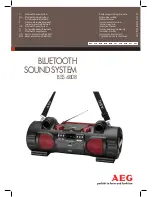
UM8000
Issue 2.0
General Description Manual
5 - 3
S
ECTION
2
S
TANDARD
P
ROTOCOLS
AND
A
PPLICATIONS
The following protocols are used with the UM8000.
ADSI -
A set of open interfaces that abstracts the capabilities of directory services
from different network providers to present a single view for accessing and managing
network resources. Administrators and developers can use ADSI services to
enumerate and manage resources in a directory service, no matter which network
environment contains the resource.
ADSI enables single log on for client desktop to multiple directories. This makes it
possible to write applications to an API but work with multiple directories, makes is
easier for subscribers to find information with rich querying of directories, and makes
it easier to manage multiple directories.
COM -
Component Object Model. COM is the cornerstone of Microsoft’s ActiveX
platform. COM is a language-independent component architecture (not a
programming language). It is meant to be a general purpose, object-oriented means
to encapsulate commonly used functions and services. The COM architecture
provides a platform independent and distributed platform for multi-threaded
applications.
DCOM -
Distributed Component Object Model. Microsoft’s distributed version of its
COM, a language-independent component architecture (not a programming
language) meant to be a general purpose, object-oriented means to encapsulate
commonly used functions and services.
HTTP -
HyperText Transfer Protocol. HTTP is the protocol used by the Web server
and the client browser for moving documents around the Internet.
IMAP -
Internet Messaging Access Protocol is an e-mail protocol for Internet mail
servers. IMAP allows users to create and manage mail folders over the WAN, as well
as to scan message headers and then download only selected messages.
LDAP -
The Lightweight Directory Access Protocol (LDAP) is a protocol for clients to
query and manage information in a directory service over a TCP connection. The
LDAP protocol was designed by the University of Michigan to provide access to the
X.500 Directory while not incurring the resource requirements of the Directory Access
Protocol (DAP). This makes it very suitable for use on the Internet.
Active Directory is a Directory Service integrated with the Microsoft Windows NT
Server operating system that offers the hierarchical view, extensibility, scalability, and
distributed security required by all customers. Microsoft has provided support for
LDAP in Active Directory and enabled it to be integrated with the Internet. With this
LDAP support, customers can deploy Active Directory in a corporate computing
environment and interoperate with LDAP clients from multiple vendors.
Summary of Contents for Univerge UM8000
Page 1: ...Unified Messaging System Version 11 0 INT 2077 GEN Issue 2 0 UM8000 General Description Manual...
Page 2: ......
Page 4: ......
Page 30: ...Issue 2 0 UM8000 2 20 Features NOTES...
Page 38: ...Issue 2 0 UM8000 4 4 Specifications NOTES...
Page 44: ...Issue 2 0 UM8000 5 6 Glossary of Terms Standard Protocols and Applications NOTES...
Page 45: ......






































